When I was nine years old, I learned what it meant to be adopted. My mother had been adopted as an infant, and always spoke about what a gift it was to be raised by her parents, my grandparents. That fact being wholly undisputed, I also recall turning to my mother one day and asking, “But what about our medical history? Do you know anything about that?” She shook her head, and a burning curiosity for answers was born in me.
Decades later, I was working on my debut novel when I learned that Joseph James DeAngelo Jr. was identified as the elusive Golden State Killer. Having grown up in Sacramento, California, the area that DeAngelo first began attacking his victims, I was familiar with his crimes: serial murder, serial rape, and burglary, among others. What struck me was the fact that his identity was finally discovered thanks to DNA that was submitted by a distant relative; I had often wondered what the results of my own DNA test submitted to a major company the previous year might lead to—not only the revelations I was seeking as the child of an adoptee, but what additional secrets might be unveiled.
The combination of these two threads of my life led me to write Strangers We Know. My main character Ivy, an adoptee, submits her spit sample to a DNA testing company while searching for answers relating to the mysterious illness she has endured for months. After connecting with a first cousin, hoping for more information that might lead to a diagnosis, Ivy travels to the rural Pacific Northwest. There, she is immersed in the secrets her biological mother harbored as a teenager during the nineteen-eighties—and which suggest a serial killer may be hiding in their family tree.
The following true crime studies—almost entirely non-fiction titles that are so vibrant they read like fiction—informed and inspired Strangers We Know.
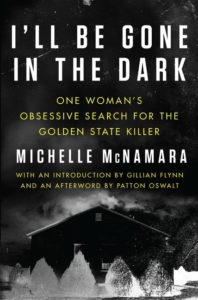
I’ll Be Gone in the Dark by Michelle McNamara
Michelle McNamara, a true-crime journalist who created the popular website TrueCrimeDiary.com, became obsessed with the violent psychopath she called “the Golden State Killer”—a violent assailant we would eventually come to know as Joseph James DeAngelo, Jr. For more than 10 years, this mysterious and violent predator committed 50 sexual assaults in Northern California before moving south, where he committed 10 sadistic murders. Then he disappeared.
Before the investigation concluded, forty years after it began, Michelle pored over police reports, interviewed victims, and embedded herself in the online communities that were as immersed in the case as she was. Called “propulsive, can’t-stop-now reading” by Stephen King, I’ll Be Gone in the Dark, captures both the terror that gripped an entire state, as well as provides a chilling account of a criminal mastermind. Undoubtedly, Michelle’s efforts to unmask this madman contributed to DeAngelo’s ultimate identification in 2018.
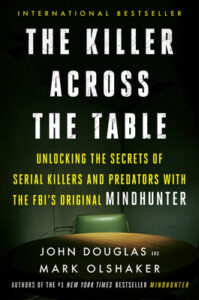
The Killer Across the Table by John E. Douglas
A brilliant account of some of the worst killers, The Killer Across the Table, offers never-before-revealed insights that led its author John E. Douglas to help capture them. A legendary FBI criminal profiler, number one New York Times best-selling author, and inspiration for Netflix’s Mindhunter, Douglas uses four of the most disturbing and complex predators to illustrate his profiling process, while divulging the strategies used.
In each of his chapters, Douglas outlines the factors that led these killers to murder and how he used his interrogation skills to expose their means, motives, and true evil. Going step by step through his interviews, Douglas connects each killer’s crimes to the specific conversation and contrasts these encounters with those of other deadly criminals to show what he learns from each one. This book is for anyone who has wondered, how could someone commit that crime? Be forewarned, however, that you will immediately binge-watch Mindhunter after reading.
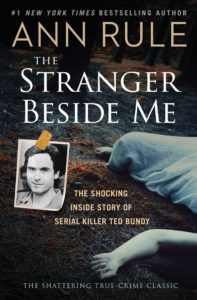
The Stranger Beside Me by Ann Rule
A classic among true crime readers, this book gripped me based on the book’s log line alone: Ann Rule was a writer working on the biggest story of her life, tracking down a brutal mass-murderer. Little did she know that the young man who was her close friend was the savage slayer she was hunting: Ted Bundy. Now known to be a brutal murderer who took the lives of at least thirty-five women, Ted Bundy terrorized the entire country during the 1970s as he hid behind his charm, good looks, his law school education, and dazzling eloquence.
His story, as meticulously researched and emotionally told by Ann Rule, his former friend, details his magnetic power, his unholy compulsion, his demonic double life and his string of helpless victims. Rule thought she knew Ted Bundy well, until the horrifying truth began to emerge. This is an essential read for anyone who wonders how Bundy could have escaped the clutches of law enforcement so many times.
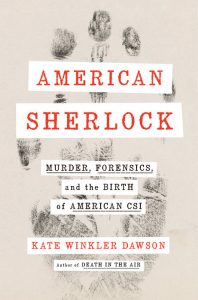
American Sherlock by Kate Winkler Dawson
Edward Oscar Heinrich pioneered much of today’s crime scene investigation techniques—an impressive resume and an essential name for anyone who considers themselves a true crime buff. Known as the “American Sherlock Holmes” and who operated out of Berkeley, California, Heinrich was one of America’s greatest—and first—forensic scientists, who ultimately cracked at least two thousand cases in his forty-year career.
Kate Winkler Dawson provides an intriguing account of several of Heinrich’s most famous cases, using never before-published primary source materials. She gives new life to Heinrich’s brilliance, as she details the context for his most famous forensic techniques, many of which are still used: blood spatter analysis, ballistics, lie-detector tests, and the use of fingerprints as courtroom evidence. Through Dawson’s literary talent, who is also behind the popular true crime podcast Tenfold More Wicked, her book American Sherlock achieves the lofty goal of writing a biography that truly reads like a novel.
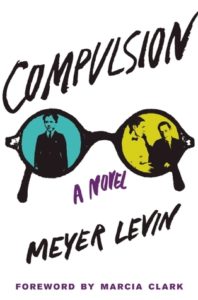
Compulsion by Meyer Levin
Heartbreaking and intense, Compulsion is largely considered the first great true crime novel. Based on the murder that rocked nineteen-twenties Chicago and the country, author Meyer Levin skillfully depicts the crime from its perpetrators’ viewpoints, while weaving in his own personal observations disguised as a budding and naïve newspaperman.
Fictional characters Judd Steiner and Artie Straus are part of the elite, upper-crust Jewish community of 1920s Chicago. Both are obsessed with Nietzsche’s idea of the superhuman, and they decide to arbitrarily pick and murder a Jewish boy in their neighborhood to prove the concept. Levin captures the saga of real-life murderers Leopold and Loeb, as he analyzes the dark motivations behind the act and questions whether redemption from such depths is possible. Not for the faint of heart, this fictionalized account will stay with you long after its last page.
Each of these books—Strangers We Know, included—underscores our inability to look away from the most shocking events of the last century. Is consuming today’s seemingly endless amount of true crime content a form of rubbernecking? Or, more innocently put: an attempt to understand the incomprehensible? After reading these true crime narratives and imagining what the families of both the victims and the perpetrators lived through, I knew I had to write what became Strangers We Know. By fusing real world headlines with my own life experience, I hope my latest thriller, an imaginative work related to DNA testing, captures a new and emerging corner of true crime fiction.
***


















